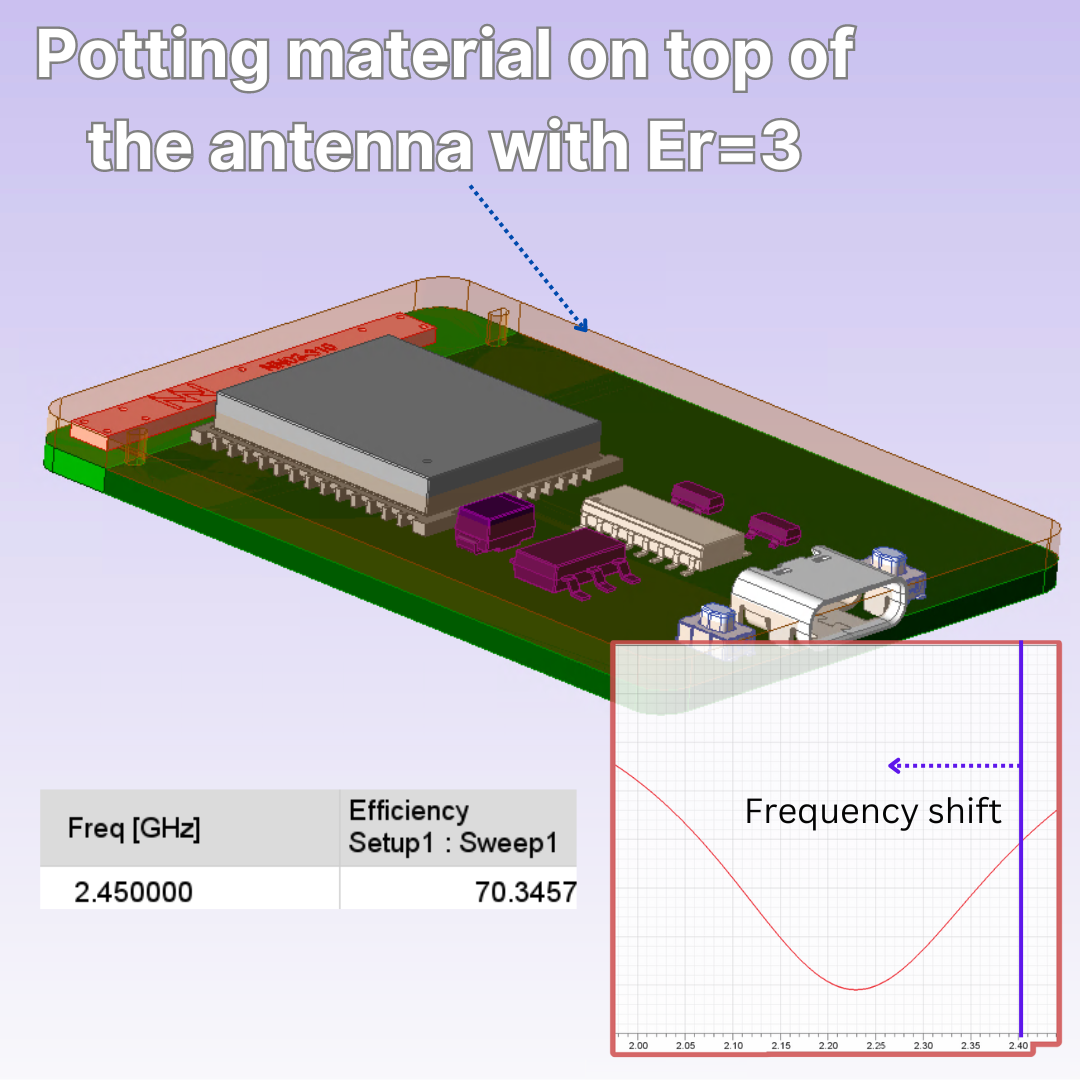When working with antennas, the materials surrounding them can make or break performance.
Metals nearby can detune the antenna, causing frequency shifts and reducing efficiency. Even traces and ground planes can act as unintended parasitic elements, altering the antenna’s radiation pattern. Non-conductive materials aren’t off the hook either: plastics and resins can detune the antenna or cause impedance mismatches, leading to reflection losses. Enclosures made of materials with high permittivity can affect antenna performance.
Another challenging surrounding for an antenna is the human body. When wearable devices are in use, the human body absorbs and reflects signals, significantly reducing overall performance. Component placement on the PCB also needs careful consideration. Placing high-frequency components too close to the antenna can introduce noise and interference, degrading signal quality. Even seemingly unrelated parts like batteries or shielding fences can impact the antenna.
How to fight it?
First, think about antenna placement early in the development stage.
Second, do proper simulation in the ultimate environment. It can help predict how surrounding materials and components will affect the antenna, allowing for design adjustments before physical prototypes, saving time and resources.
And third, allocate a proper matching network for fine-tuning. It helps a lot in mitigating harmful effects from the environment.
In the example below an antenna was simulated first in a free space environment, then submerged into potting material (liquid resin) with Dk=3. It resulted in shifted resonant frequency and lower efficiency. Fine tuning using a matching network is required to return the antenna back to its peak performance.



